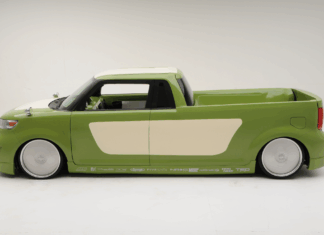Many of us have seen the news reports or read stories about people who are dumping used cooking oil into their diesels. Veggie and biofuel diesels are cleaner than hybrids and represent a quick way to lower our dependence on foreign oil. All you need to do is dump used cooking oil or veggie oil into your diesel’s tank and go!
BIODIESEL: Many diesels can run biodiesel with little or no major alterations to their fuel system. The work of the conversion kit previously mentioned is substituted for a chemical process that converts used cooking oils, veggie oils and even animal fat into a year-round, cleaner burning alternative to diesel. There are no legal restrictions for using fuel from tier I and tier II certified biodiesel stations (which are easy to locate online).
By using chemicals like sodium hydroxide (lye) and methanol (methyl alcohol) with the proper measuring, storing and mixing devices; you can make your own biodiesel. It is a mildly complicated process given the specifics of mixing chemicals precisely.
Biofuel cooperatives with fuel stations are sprouting up all over the nation. Many mix biodiesel with petrodiesel creating a mix some call “B-20” (B-100 is 100% pure, refined veggie oil). This, and similar mixes, can be used in any contemporary diesel vehicle.
Using pure or “neat” B-100 biodiesel is very clean burning; however, older diesel engines may have issues with the corrosive nature of the B-100. Older diesel vehicle’s elastomers and natural rubber compounds (like hoses, gaskets and various components) tend to degrade with B-100. With some revisions, you can run nearly any diesel full time on B-100 and use next to no petrodiesel.
Biodiesel is a viable, consumer friendly way to lower carbon dioxide emissions by simply using it as a petrodiesel alternative. According to the Colorado Governor’s Energy office (http://www.colorado.gov/energy/renewables/biofuels-biodiesel.asp), “Neat biodiesel (100% biodiesel) reduces carbon dioxide emissions by more than 75% over petroleum diesel. Using a blend of 20% (B-20) biodiesel reduces carbon dioxide emissions by 15%.”
Is all this practical?
I interviewed Fred Andres, a 46 year-old nurse from El Sobrante, California who owns two diesel vehicles which have been converted to run on veggie fuel and biodiesel. His mid 80’s Mercedes 300D was converted when he bought it used over two years back. Since then he has run a variety of fuels through his Mercedes with varying degrees of success.
His conversion failed a while after purchase. Rather than replacing the expensive system, he opted to use various mixes of veggie oil and petrodiesel in the main tank. Other than the failure of a fuel pump and some general/common maintenance issues, he maintains that his Mercedes is an exceedingly reliable vehicle that has provided thousands of trouble free miles; all at a fraction of the cost of running regular diesel and (much to his delight) with very little of his money going to “Big Oil.”
Mr. Andres’s advice for anyone who is considering a diesel conversion is, “get an engine warmer if the conversion didn’t come with one.” He also mentioned that having a good (read: trustworthy) mechanic is key to owning a veggie burner of any sort. Having the right person with the necessary skills to work on diesels is, “hard to find.”
When asked if he would consider buying one of the new diesels to run biofuel, he stated that he can’t wait – neither can I.
Editor’s Note: This is part 2 of Nathan’s story. You can find part 1 HERE.
 Automotive media, racing, vehicle evaluation, wrecking yards, and car sales are just a part of Nathan Adlen’s vehicular past. He writes out of high octane passion! To read more reviews by Nathan Adlen or just to enjoy more of excellent writing please visit him on at his examiner.com page HERE.
Automotive media, racing, vehicle evaluation, wrecking yards, and car sales are just a part of Nathan Adlen’s vehicular past. He writes out of high octane passion! To read more reviews by Nathan Adlen or just to enjoy more of excellent writing please visit him on at his examiner.com page HERE.
Check out the video below to see which is the most fuel efficient The diesel, the hybrid or the small gasoline car?
Follow on twitter @TFLcar or watch latest car
review videos on YouTube.
























